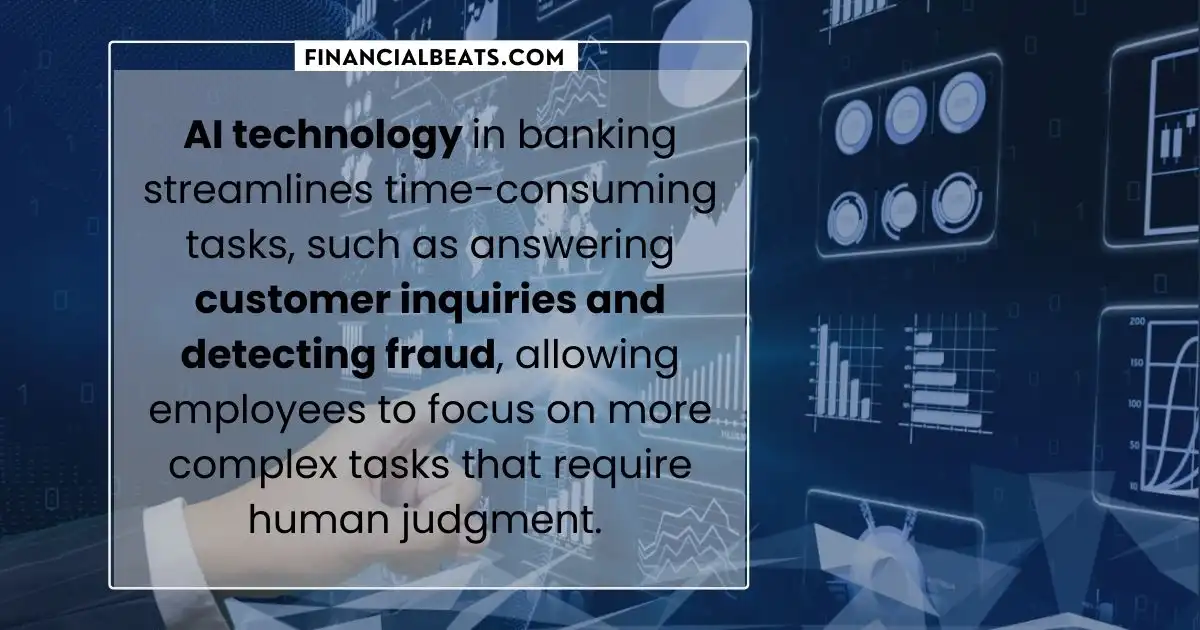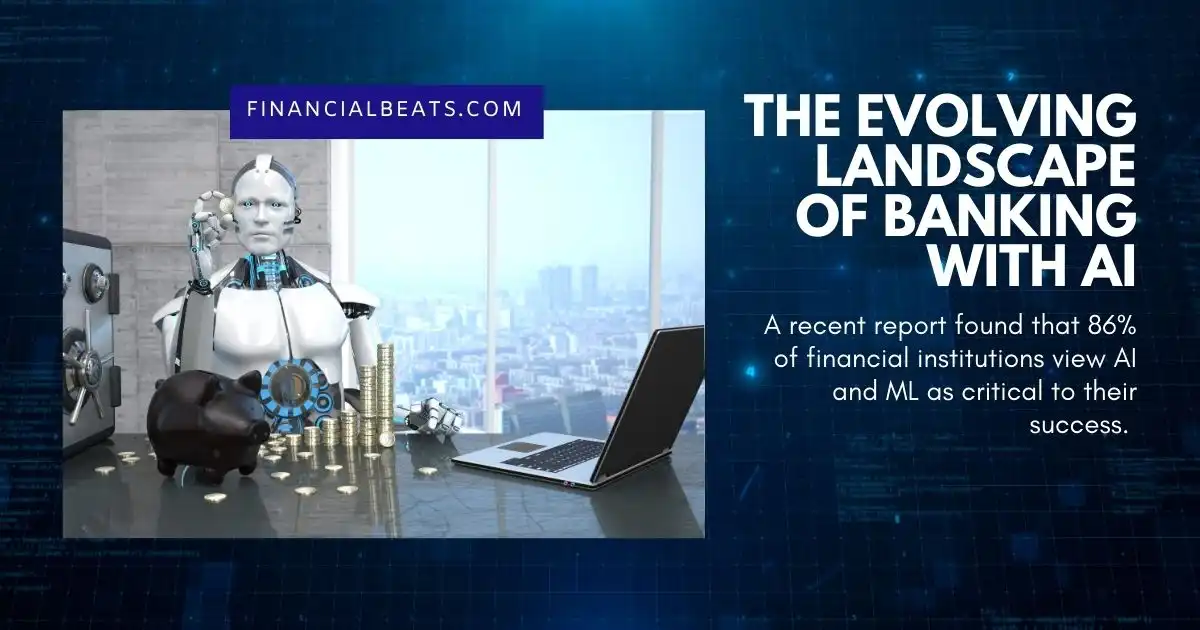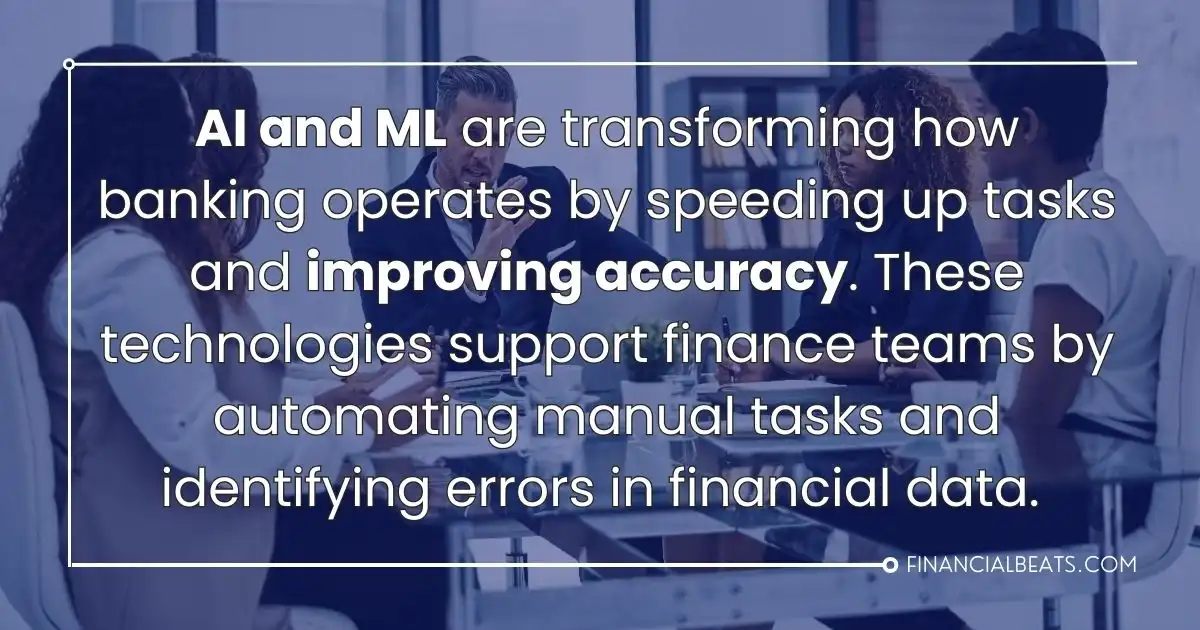Artificial Intelligence (AI) has been around for a while, but its recent advancements are significantly transforming industries like banking.
According to a banking report by McKinsey, generative AI has the potential to boost productivity in the banking sector by as much as 5% and cut global expenditures by up to $300 billion. However, this represents only a portion of the overall impact.
Enhancing Efficiency through Automation

AI technology in banking streamlines time-consuming tasks, such as answering customer inquiries and detecting fraud, allowing employees to focus on more complex tasks that require human judgment.
For instance, AI chatbots provide round-the-clock customer support, improving response times and customer satisfaction. Additionally, tools like JP Morgan’s COiN system can review legal documents at a pace far beyond human capabilities, freeing up employees to handle more strategic work.
Enriching Customer Experience
Customers now expect fast and convenient banking services. AI allows banks to meet these demands by offering personalized recommendations, financial advice, and enhanced customer experiences. AI tools analyze customer data to offer tailored investment options, loans, and insurance plans that suit individual needs.
AI can even predict a customer’s requirements, such as suggesting overdraft protection based on their spending habits. Moreover, it enables banks to deliver customized advertisements and services based on customer preferences.
Mitigating Risks and Fraud Prevention
Banks face various risks, including credit, operational, and cyber risks. AI helps manage these risks more effectively by analyzing vast data sets to detect patterns and identify potential threats.
For example, AI can scrutinize transactions to flag suspicious activities, such as money laundering or fraud. It can also assess credit risk by analyzing customer data, including credit scores and payment histories.
Streamlining Regulatory Compliance
Banks are required to comply with numerous regulations, such as verifying customer identities and preventing money laundering. AI simplifies these processes by automating tasks like identity verification and transaction monitoring.
Additionally, AI tools can help detect and prevent illegal activities such as insider trading, ensuring that banks adhere to regulatory standards.
The Evolving Landscape of Banking with AI

AI and machine learning (ML) are changing the banking industry. A recent report found that 86% of financial institutions view AI and ML as critical to their success. These technologies enhance productivity, automate tasks, and enable companies to adapt to industry changes. However, challenges remain, including the need for employee training, improving data quality, and refining IT processes.
AI helps overcome these challenges by automating tasks, identifying skill gaps, and analyzing massive data sets. While the potential of AI is vast, it’s essential to use data responsibly and ethically. Despite the obstacles, there are actionable strategies banking leaders can use to implement AI and ML effectively.
AI’s Role in Finance From Automation to Insight

AI and ML are transforming how banking operates by speeding up tasks and improving accuracy. These technologies support finance teams by automating manual tasks and identifying errors in financial data. Previously, tasks like error detection and outcome prediction were handled manually. However, with the growing demand for efficiency and deeper insights, AI has become a necessity.
For example, ML can detect errors in financial records, saving finance teams significant time. In financial planning and analysis (FP&A), accurate forecasting is critical, and ML helps by analyzing both historical and real-time data for more precise predictions. These systems continuously learn and adapt to changes, making them increasingly reliable for financial analysis.
Leveraging AI for HR in the Financial Sector
The competition for skilled talent in the financial sector is intense. Offering competitive salaries alone is no longer enough to attract top talent. Financial organizations must also focus on company culture and employee experience.
It’s essential to develop professionals who think strategically and are continuously learning. AI and ML can support this process by analyzing employee data to match skills with appropriate roles. This approach enables institutions to maximize their workforce’s potential, increase productivity, and use resources more effectively.
The finance industry places a high value on individuals with strong data analysis and technological skills. Almost all financial organizations agree that being proficient in technology and adapting to new tools are essential skills for success.
To meet this demand, companies must invest not only in hiring new talent but also in upskilling current employees. AI and ML are crucial in helping organizations focus on skills over traditional qualifications. As AI becomes more integrated into finance, companies will need to enhance human capabilities rather than replace them.
How AI is Changing the Future of Banking
Banking leaders are feeling pretty positive about the future of the industry. Many think the banking sector is on a solid growth path, and they see technology, customer satisfaction, and innovation as the keys to long-term success. For those financial institutions already using AI, it’s become a must-have for continued growth.
Looking ahead, banking leaders need to weave AI and machine learning into their business strategies while keeping things transparent, trustworthy, and accountable. This means not just updating old systems but also training their teams and enhancing the quality and accessibility of data.
Financial institutions really need to focus on protecting data and ensuring fairness in their AI practices while also investing in skilled professionals to handle these AI systems effectively. With the right approach, AI can help lower costs, boost efficiency, and provide top-notch services.
FAQs
How is AI and ML used in banking?
AI and machine learning (ML) are used in banking to detect fraud, automate customer service (like chatbots), and analyze data for personalized financial advice. They help banks make better decisions by spotting patterns and predicting risks, making banking safer and more efficient.
How is AI used in capital markets?
In capital markets, AI is used to analyze large amounts of financial data to predict market trends, automate trading, and reduce risks. AI helps traders make faster and smarter decisions by spotting patterns and opportunities that humans might miss.
How AI and machine learning are improving the banking experience?
AI and ML improve the banking experience by making services faster and more personalized. Chatbots help with customer support, while AI systems can offer tailored financial advice or detect suspicious activity quickly, making banking more convenient and secure for customers.
How artificial intelligence is revolutionizing business?
AI is changing business by automating tasks, improving decision-making, and offering personalized services. It helps companies work more efficiently, reduce errors, and better understand customer needs, leading to faster growth and improved customer satisfaction.
